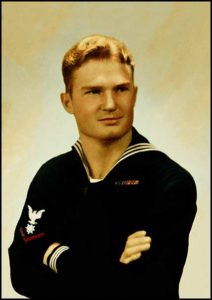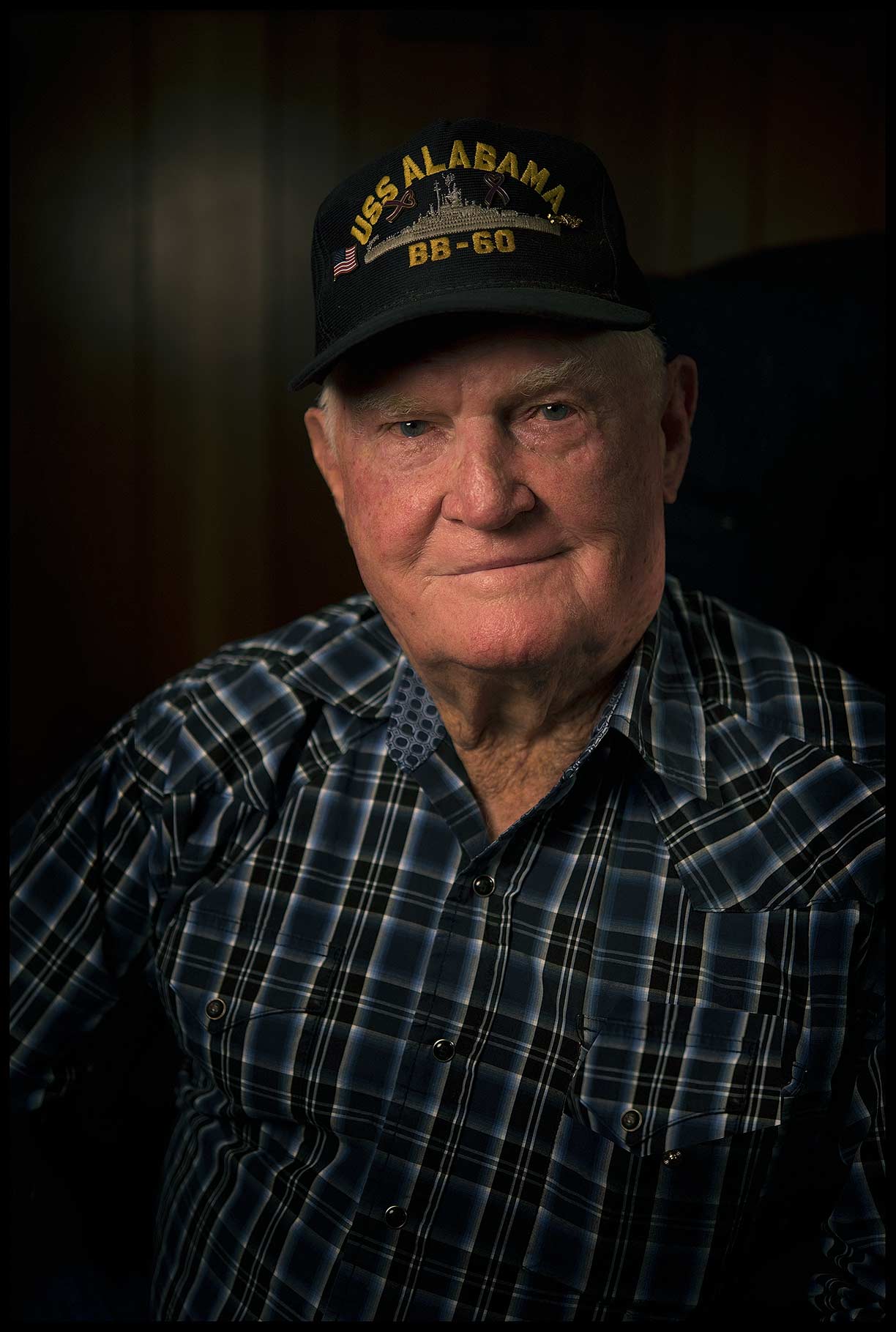Adolph Hoffman
QM2/c USS Alabama
Adolph Hoffman
Quartermaster 2nd Class, U.S. Navy
1943–1946

PO3, Adolph Hoffman
Los Angeles, CA, 1944
I was assigned to the USS Alabama My battle station was steering the ship. The battles normally did not last long but the cleanup did. What was worse was typhoons.
I grew up in San Antonio and went to Somerset High School; graduated in 1940. I drove a school bus and coached what coaching there was to do. I didn’t want that hand-to-hand fighting in the Army and really wanted to get into the Army Air Corps. They were full up, so I joined the Navy on February 19, 1943, and it was the first time I’d been out of Texas.
After boot camp in San Diego, I went to quartermaster school in San Pedro. I was assigned to the USS Alabama—a battleship, I think the ship was in 10 major battles, and I was in 8 of them. I loved the Alabama; it was my home for two years. We had to navigate the ship by shooting the stars and the moon to get our location. It’s called celestial navigation and is simply finding our unknown position by using a known position.
The ship was in the Marshalls, the Gilbert Islands, Nauru Island, Truk Atoll, Saipan, Tinian, Palau and others. The Alabama steamed more than 175,000 miles. The time I was on it, we had 4-5 captains. We lost five shipmates because of our antiaircraft guns. You have guns shooting at a plane. As they swing around, if they are shooting high enough the gun captain allows them to continue turning. In this instance, they weren’t high enough, the gun captain did not catch it and they shot into one of our own antiaircraft guns.
My battle station was steering the ship. The battles normally did not last long but the cleanup did. What was worse was typhoons. We’d lose 2-3 ships in them. I steered the ship for almost 90% of the time because my replacement couldn’t keep it on course. It was quite an experience. We ate good. You can’t believe the food; baked pies and all. We had good cooks. We ate C-rations in battle.
When I got back, we started a baseball team. We had a Black baseball team come out. People wanted me to let them know when the Black team was going to come out because they really put on a show. I got out in 1946. My oldest brother and I farmed about 500 acres. I bought two International tractors because I had priority as a serviceman. We had real good luck, then one year we didn’t have no rain and didn’t make a crop. I had to take a job with Swift and Company, one of the biggest meat packing companies in the United States. That’s where I met my wife. We got married in 1956, two years after we met. My wife died about 10 years ago; we were married for 51 years.
At Swift I drove a truck loaded with meat. I drove to Del Rio and Laredo; Brownsville was the longest trip. I went to work for her dad drilling pier foundations. I drilled the Tower of the Americas, the HemisFair, most of the bridges all over town, Fort Riley, Kansas, Kay Part Housing. Air Force Academy at Colorado Springs—did the Service Center there. Did all over; 43 1/2 years. I didn’t really quit farming until a year or so ago. I still have about 100 cattle.
I’ve been a big participant in the Senior Olympics. I hold several national records for my age group. I compete most every year and have won over 600 medals. Actually, my ambition is to break the world record in most everything I do for my age group. The older I get the easier it gets. The world record for the pole vault was over eight feet. At my age it is 6.5 feet. I’m going to work at it.
I was on the first honor flight out of San Antonio. It was wonderful. They had escorts and took us to all the monuments. {01-28-2016 • Somerset, TX}
